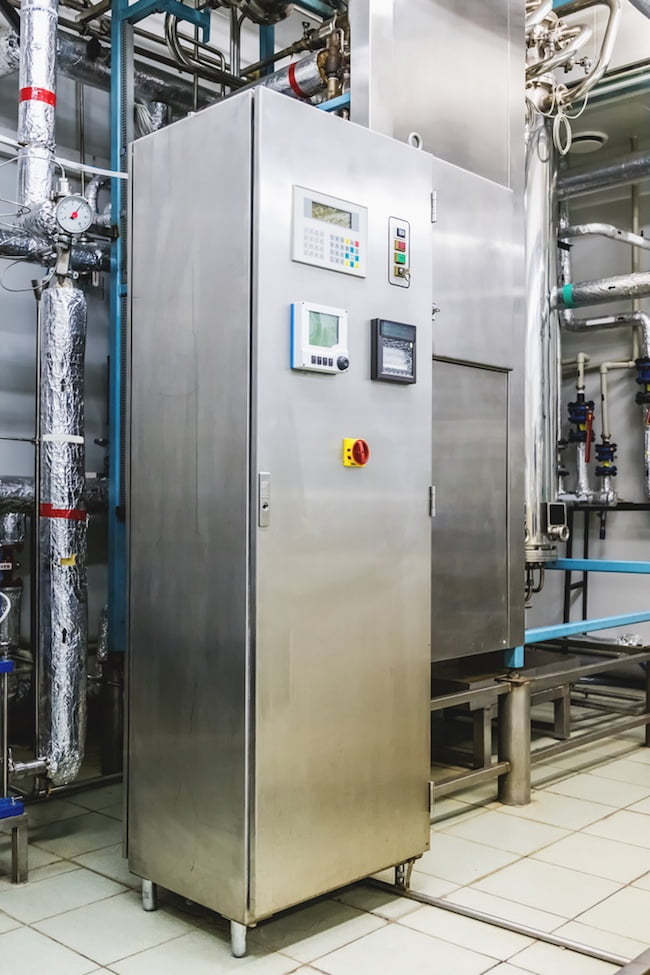What to Consider When Selecting Enclosure Cooling for NEMA Type 12

NEMA Type 12 enclosures are well suited for indoor use. Unless the heat load is very low, they often require some form of closed loop cooling to keep internal temperatures within component recommended operating temperatures. Their level of sealing is suited for use in dirty or dusty environments although they are not suited for situations where there is excessive water present. There are a number of cooling options to choose from for NEMA 12 enclosures.
Enclosure Sealing
Because the enclosure is designed to prevent the ingress of dirt, cooling options adopted are primarily closed loop solutions that maintain the integrity of the enclosure. The type of cooling solution you choose is dependent upon the heat load, ambient temperature range, and the maximum allowed internal temperature.
Provided the ambient temperature is always below the internal temperature, an air to air heat exchanger is an extremely efficient solution that consumes virtually no energy, yet is capable of removing as much as 40 watts per degree Fahrenheit difference between the internal and ambient temperatures.
Air-to-water heat exchangers are ideal for food processing plants, agricultural irrigation, waste-water treatment, automotive plants, flour milling and mining operations where a water supply is readily available onsite.
If the ambient temperature is higher than the required internal temperature of the enclosure, or for high heat loads, an enclosure air conditioner is the best solution.
Indoor Use Only
NEMA 12 enclosures are designed for indoor use only. Their design is such that they are not intended to handle arduous outdoor conditions such as windblown rain, sleet, snow, and ice.
As these enclosures are not required to be highly corrosion resistant, most NEMA 12 enclosures are typically manufactured from painted steel.
The selection of enclosure cooling solutions depends upon the design of the enclosure, its location, and method of mounting. The best location to install enclosure cooling is on the enclosure ends as this permits good air circulation. Another alternative is on the enclosure doors, but cognizance must be taken of the weight of the enclosure cooler and the strength of the door. It’s best to avoid placing the cooler on top of the enclosure as this may require additional ducting to direct cool air to the bottom of the enclosure, and the risk of water infiltration is higher than with side mounting.
Dirt, Dust, and Fibers
The sealing techniques used on a NEMA 12 enclosure protect internal components from contamination in dusty and dirty environments. However, this presents some additional problems for enclosure cooling systems as excessive dirt, dust, and fibers may prematurely block the filters for the condenser circulating fans and impede cooling unless special high-capacity filters are used.
Avoid Water
NEMA Type 12 enclosures are not designed to handle rain, falling water, or hose downs, but their design does accommodate drips and light splashing. In general terms, a NEMA 12 enclosure should be avoided if water is present except in the most incidental way.
Cooling Options for NEMA Type 12
As earlier indicated, NEMA Type 12 enclosures are best served by closed loop cooling methods. These requirements are readily met through the use of air to air heat exchangers and enclosure air conditioners.
Thermal Edge offers a wide range of cooling solutions compatible with NEMA Type 12 enclosures. These range from low-capacity heat exchanger solutions to high-capacity enclosure air conditioners capable of cooling large cabinets with significant heat loads. For information on models that are suitable for your application, contact our sales team located in your area.


